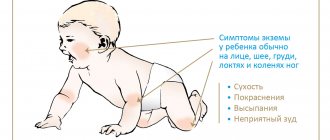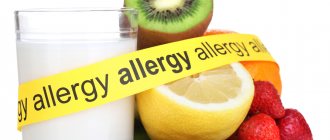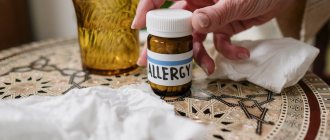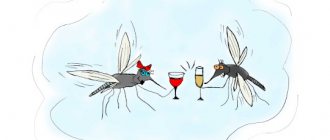Patients with a reaction to UV rays are advised to avoid eating nuts, eggs, seafood, chocolate, and citrus fruits. After beauty treatments, the skin should be protected from the sun - chemical peeling, mesotherapy, and resurfacing are not compatible with tanning. A photosensitizer can even be a detergent for washing clothes, fabric softener or household chemicals for cleaning the house. Among medications, antibiotics, tranquilizers, and antidepressants most often affect sensitivity to the sun.
Some patients with kidney and liver diseases, hypovitaminosis, intoxication, metabolic problems, and disorders of the immune system note negative skin reactions after sunbathing. A history of bronchial asthma and hay fever indicates the possibility of high sensitivity to UV rays. In some diseases, photodermatitis is a symptom - it is observed in 90-95% of cases of porphyria and hemosiderosis.
Below is background information about the symptoms and treatment of photodermatitis. You can learn more about the disease, therapy and prevention at an appointment with a dermatologist at any branch of the NEARMEDIC clinic.
Provocateurs of photodermatitis
Endogenous photodermatitis manifests itself less frequently in the form of xeroderma pigmentosum, solar prurigo, eczema, Bazin's light pox, etc. Exogenous photodermatitis occurs more often - to provoke it, a combination of any cosmetic component and ultraviolet radiation is sufficient. Cosmetics contain many potential allergy triggers, for example, retinols, musk, sandalwood, phenol, rose oil, salicylic acid, dill juice, parsley oil, sea buckthorn, St. John's wort. Even pollen on the skin can cause this reaction.
Among the drugs that are dangerous in combination with the sun are:
- photosensitizing drugs – Metvix, Oksoralen, Ammifurin;
- antibiotics – Doxycycline, Tetracycline;
- drugs against diabetes, hormones, sulfonamides, cytostatics;
- medicines to treat heart disease;
- anti-inflammatory drugs, such as Aspirin or Ibuprofen;
- antihistamines, barbiturates, antipsychotics.
Symptoms
The mechanism of development of the disease is toxic or allergic in nature.
In the allergic pathway, the chemical composition of a substance on/in the skin changes and it gains the ability to provoke reactions. A distinctive feature of this route is the rapid reaction and spread of symptoms, including areas protected from the sun.
With the toxic development of the disease, skin cells lose their ability to resist UV rays, and the resulting burns in the inner layers of the skin lead to severe inflammation. Some of the cells die, itching, irritation, blisters, papules, and pustules appear. The reaction only applies to those places that were not covered from the sun.
Photodermatitis has clear symptoms:
- redness and swelling of the skin;
- acquisition of a reddish tint on the lips and mucous membranes of the eyes;
- rashes of various types from blisters and nodules to papules and pustules;
- itching, which occurs due to compression of nerve endings due to swelling (scratching leads to infection);
- skin pigmentation - becomes noticeable after other symptoms disappear, due to the accumulation of melanin;
- peeling of the skin during the chronic course of the disease.
Depending on the mechanism of development, areas not covered by clothing are affected - décolleté, face, neck, hands, or inflammation spreads to covered areas. The limbs suffer less often than others. With exogenous photodermatitis, in addition to the listed skin manifestations, fever, weakness, lacrimation, pain in the eyes, nasal reactions, and swelling of the mucous membranes may occur.
The intensity of manifestations depends on skin type, level of health and immunity, and the presence of other allergies. In some patients, the condition may worsen to the point of fainting, bronchospasm and decreased blood pressure.
The listed signs are nonspecific and can easily be confused with a food allergy. For some people, a rash and redness appear within half an hour after being in an open area, for others, symptoms appear after 8-12 hours. Please note that not only the real sun has an effect, but also artificial ultraviolet radiation in a solarium.
How does the disease manifest itself in children and adults?
The symptoms of photodermatosis are differentiated by several signs.
Children:
- swelling and congestion of the nasal cavity;
- lacrimation for no apparent reason;
- swelling of the cheeks and lips;
- red skin tone;
- rashes;
- itching and burning.
Adults:
- sudden deterioration in health;
- dizziness;
- constant nausea;
- bouts of vomiting;
- acute feeling of burning and itching;
- red skin color;
- the appearance of pimples and blisters;
- heat;
- signs of conjunctivitis;
- fear of light;
- increase or decrease in skin pigmentation.
Diagnostics
Treatment of photodermatitis is carried out by a dermatologist at any branch of the NEARMEDIC network. The specialist collects anamnesis and identifies:
- information about periods of exacerbation of rashes,
- relationship with medications taken, cosmetics used,
- nutritional features;
- information about exposure to chemicals and constant sun exposure at work;
- the presence of a hereditary predisposition.
The dermatologist conducts a physical examination and refers the patient for laboratory/instrumental diagnostics. To clarify the diagnosis in controversial cases, a related specialist is involved.
Doctors who help the dermatologist with diagnosis:
- therapist - identifies the relationship with medications taken;
- allergist - if there is a suspicion of a reaction to an allergen;
- rheumatologist - if there are problems with connective tissue;
- hematologist - for symptoms indicating porphyria;
- hepatologist - if hemochromatosis is possible.
Timely diagnosis makes it possible to determine the endogenous or exogenous nature of the manifestations, and thereby detect a serious disease for which photodermatosis is a symptom.
Diagnostics includes the following steps:
- allergy tests;
- blood tests;
- Analysis of urine;
- serological studies;
- rheumatic tests that identify autoimmune problems and connective tissue diseases;
- Ultrasound to determine the root cause in the form of kidney disease, liver and other organs.
Treatment
A patient with active manifestations requires external treatment to heal blisters, blisters, and relieve itching. To do this, Lanolin, zinc ointment, methyluracil, Panthenol, Sinaflan are applied to the rash. If scratching leads to infection of the wounds, Levomekol and Liniment Synthomycin ointments are added to the treatment.
Internal therapy depends on what causes the reaction:
- porphyria and hemosiderosis – antioxidants;
- vitamin deficiency - vitamin complexes selected according to analysis (B, E and C);
- liver or kidney diseases - comprehensive treatment from a specialized doctor using local therapy and preventive measures.
If photodermatitis is not caused by internal diseases, the doctor prescribes general therapy with antihistamines, antioxidants, regenerating ointments that relieve inflammation, and for serious lesions - corticosteroid ointments. Among them, hydrocortisone is the most popular. Hormonal agents help to effectively relieve inflammation, eliminate swelling that causes itching, and quickly bring the skin back to normal even with acute manifestations.
During therapy you need to avoid being under direct rays. Washing clothes is possible only with non-aggressive means, without using conditioners, with thorough rinsing. All picnics should be cancelled, and no contact with flowering plants. The use of cosmetics and perfumes is temporarily suspended. If photodermatitis is triggered solely by external factors, replacing the medications and cosmetics that cause it makes it possible to avoid relapses with a high degree of probability.
The period of therapy, depending on the severity of the disease, lasts from 2-3 days to 2 weeks.
Chronic photodermatitis
Repeated dermatitis can provoke eczema or a chronic form of the disease. If photodermatitis occurs regularly, tanning should be completely avoided and all measures should be taken to protect the skin from sun rays on a daily basis.
Chronic photodermatitis usually appears when engaging in activities that involve prolonged exposure to the open air. Inflammatory stages occur constantly, and therefore the skin acquires irreversible changes:
- severe dryness;
- strengthening the pattern;
- spider veins;
- hyperpigmentation;
- thickening;
- elastosis.
Ignoring chronic photodermatosis leads to even greater changes - scars, wrinkles. The skin color becomes darker, with light spots appearing in dark areas. At some point, continuous damage to the integrity of the skin can lead to the development of cancer.
The appearance of serious consequences of chronic photodermatosis is typical for people who, due to their work, are exposed to constant exposure to the sun (agricultural workers, sailors, builders). Representatives of such professions need to take preventive measures especially seriously.
Symptoms of photodermatosis
Increased sensitivity to the sun causes a range of symptoms similar to sunburn. Most often patients note:
- skin redness;
- rash;
- blisters;
- bakery;
- swelling
These symptoms actively appear in those areas of the skin that are exposed to direct sunlight. The longer you are in the sun, the more severe the symptoms. Associated symptoms may also occur, such as fever, chills, general malaise, headache, conjunctivitis.
Prevention of photodermatitis
To eliminate negative manifestations when the skin is exposed to UV rays, you should start from the causes of photodermatitis indicated by your doctor, and also follow a number of general recommendations:
- if a rash is provoked by food, avoid it for the duration of active sun;
- adjust the diet by adding foods with vitamin B - currants, green tea, fish, liver products;
- give up cosmetics that cause rashes, choose new products together with a dermatologist;
- use cream with factor 50, hats, umbrellas, dark glasses;
- do not appear under the sun between 10.00 and 16.00;
- wear light-colored clothes with long sleeves made from natural materials;
- before the expected exposure to radiation (vacation/dacha trip), do not undergo aggressive cosmetic procedures;
- when taking medications from May to September (especially before trips to the sea), carefully study the instructions for interaction of the drug with UV rays;
- stop taking medications with which the reaction occurs and replace them with alternatives;
These recommendations are suitable for patients who have already been diagnosed and for people who do not want to encounter photodermatitis in the future or simply do not want to get sunburned.
Folk remedies
In addition to the methods used in medicine, the following folk remedies can be used to treat mild forms of photodermatitis:
- Masks made from finely grated and cooled raw potatoes;
- Fresh cabbage leaves, which must be applied to the affected areas, after scratching them to release the juice;
- Compresses from chilled herbal decoctions: chamomile, calendula, string, oregano. The decoction is made at the rate of 1-2 tbsp. spoons of dry raw materials per glass of boiling water, incubate for 10 minutes in a water bath. The resulting broth is cooled, clean gauze pads are soaked in it and applied to the affected area.
These products can only be used if there is no damage to the skin accompanied by bleeding, otherwise an infection can occur.
Make an appointment
Photodermatitis cannot be ignored - it can develop into eczema/chronic form or be a signal of a serious internal problem that requires immediate attention. Doctors at public clinics are not always ready to work effectively with such complaints. NEARMEDIC specialists offer in-depth diagnosis and treatment, preventing photodermatitis from becoming chronic.
If you notice skin rashes 1 to 12 hours after sun exposure, make an appointment with a dermatologist while the rash is still present. Registration is made by phone, through a general form on the website or an appointment form for a specific doctor (under the price list at the bottom of the page). Reception addresses are indicated on the information cards.
Sources
- Torre Monmany N., Astete JA., Ramaiah D., Suchitra J., Krauel X., Fillol M., Balasubbaiah Y., Alarcón A., Bassat Q. Extended Perinatal Mortality Audit in a Rural Hospital in India. // Am J Perinatol - 2021 - Vol - NNULL - p.; PMID:33902133
- Bellomo TR., Jeakle MA., Meyerhoff ME., Bartlett RH., Major TC. The Effects of the Combined Argatroban/Nitric Oxide-Releasing Polymer on Platelet Microparticle-Induced Thrombogenicity in Coated Extracorporeal Circuits. // ASAIO J - 2021 - Vol67 - N5 - p.573-582; PMID:33902103
- Stark A., Cantrell S., Greenberg RG., Permar SR., Weimer KED. Long-term Outcomes after Postnatal Cytomegalovirus Infection in Low Birthweight Preterm Infants: A Systematic Review. // Pediatr Infect Dis J - 2021 - Vol - NNULL - p.; PMID:33902071
- Solomon-Cohen E., Reiss-Huss S., Hodak E., Davidovici B. Low-Dose Acitretin for Secondary Prevention of Keratinocyte Carcinomas in Solid-Organ Transplant Recipients. // Dermatology - 2021 - Vol - NNULL - p.1-6; PMID:33902035
- Balakrishnan B., Payanam U., Laurent A., Wassef M., Athipettah J. Efficacy evaluation of anin situforming tissue adhesive hydrogel as sealant for lung and vascular injury. // Biomed Mater - 2021 - Vol - NNULL - p.; PMID:33902022
- Wei C., Sun Y., Wang J., Lin D., Cui V., Shi H., Wu A. LncRNA NONMMUT055714 acts as the sponge of microRNA-7684-5p to protect against postoperative cognitive dysfunction. // Aging (Albany NY) - 2021 - Vol13 - NNULL - p.; PMID:33902009
- Davis M., Johnson C., Pettit AR., Barkin S., Hoffman BD., Jager-Hyman S., King CA., Lieberman A., Massey L., Rivara FP., Sigel E., Walton M., Wolk CB., Beidas RS. Adapting Safety Check as a Universal Suicide Prevention Strategy in Pediatric Primary Care. // Acad Pediatr - 2021 - Vol - NNULL - p.; PMID:33901726
- Nissen L.R., Tsamardinos I., Eskelund K., Gradus JL., Andersen SB., Karstoft KI. Forecasting military mental health in a complete sample of Danish military personnel deployed between 1992-2013. // J Affect Disord - 2021 - Vol288 - NNULL - p.167-174; PMID:33901697
- Yan H., Wu H., Xia Y., Huang L., Liang Y., Li Q., Chen L., Han Z., Tang S. Acquisition and transmission of HIV-1 among migrants and Chinese in Guangzhou, China from 2008 to 2012: Phylogenetic analysis of surveillance data. // Infect Genet Evol - 2021 - Vol - NNULL - p.104870; PMID:33901684
- Jimenez J., Paller AS. The Atopic March and its Prevention. // Ann Allergy Asthma Immunol - 2021 - Vol - NNULL - p.; PMID:33901675










